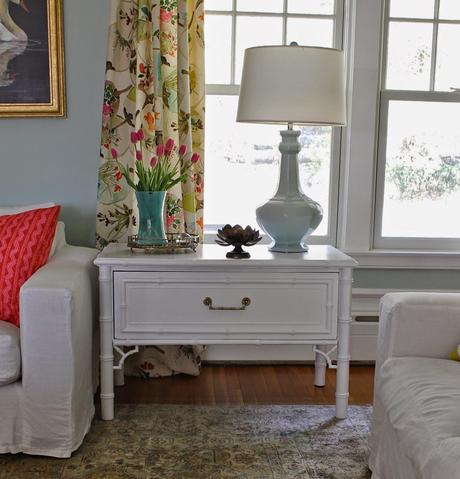
I found this little table on the curb for free. It had great lines, was very sturdy and actually looked very similar to a side table I already had. It also had a bunch of defects which made it a perfect candidate for this post. So lets get right to the fixing part!
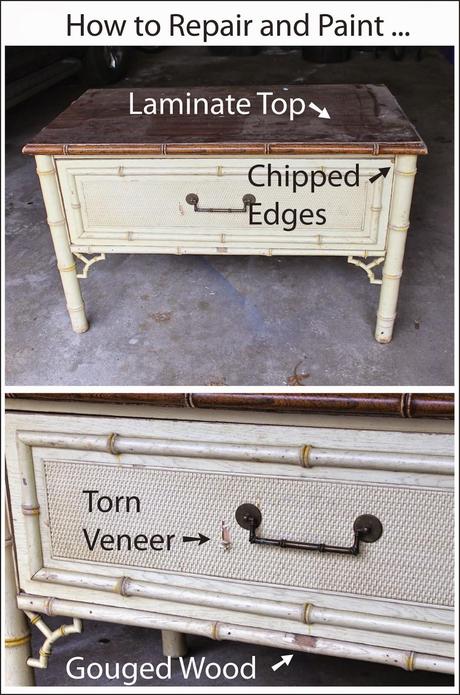
This baby was going to need some serious TLC. I headed to True Value and grabbed some medium and fine grit sandpaper, wood putty and wood glue.
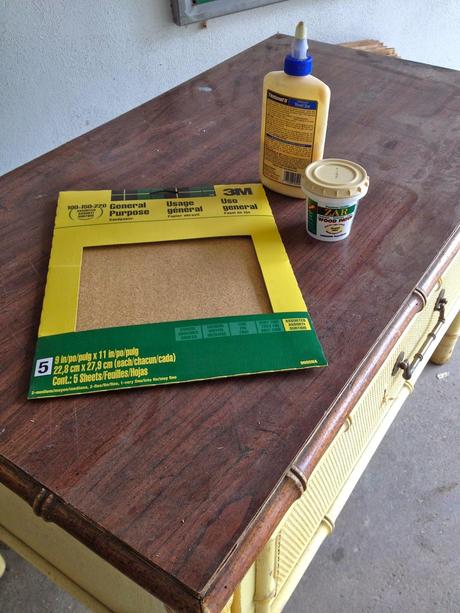 I gave the entire piece a good sanding to rough up the laminate and loosen all the peeling paint. There was quite a bit of that.
I gave the entire piece a good sanding to rough up the laminate and loosen all the peeling paint. There was quite a bit of that.
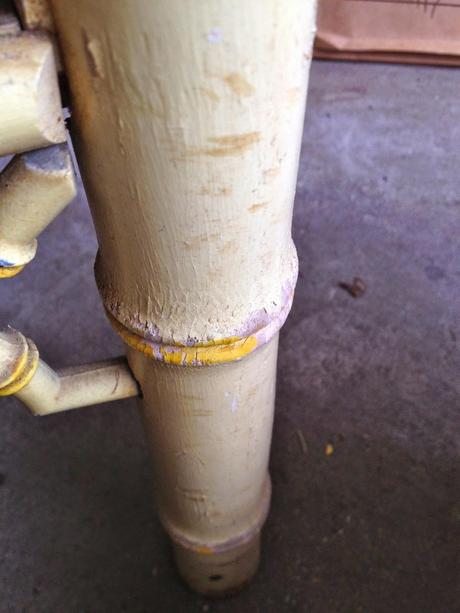
 As I sanded, I noticed the bamboo trim along the edge was loose, so I re-glued it and tacked it in place with some small brad nails.
As I sanded, I noticed the bamboo trim along the edge was loose, so I re-glued it and tacked it in place with some small brad nails.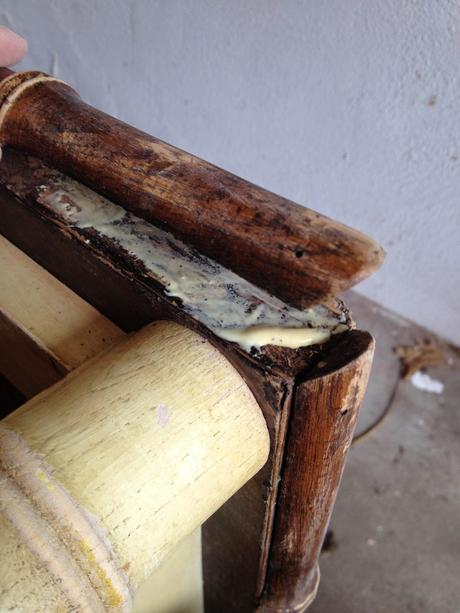 The veneer on the drawer front had to go. I thought about replacing it with a piece of grasscloth wallpaper, but in the end I opted for plain. I carefully cut along the edge of the veneer with a sharp utility knife...
The veneer on the drawer front had to go. I thought about replacing it with a piece of grasscloth wallpaper, but in the end I opted for plain. I carefully cut along the edge of the veneer with a sharp utility knife...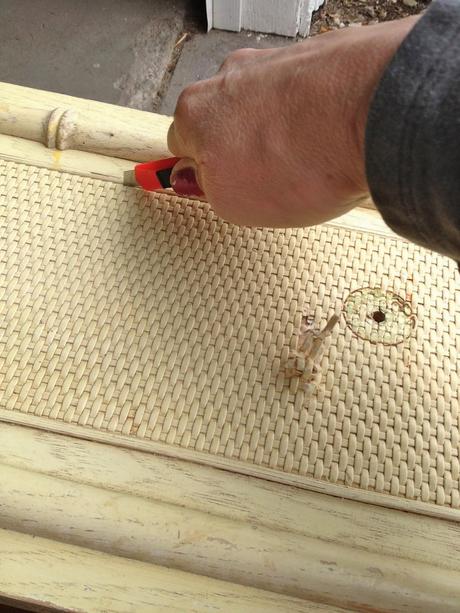 and peeled it off.
and peeled it off.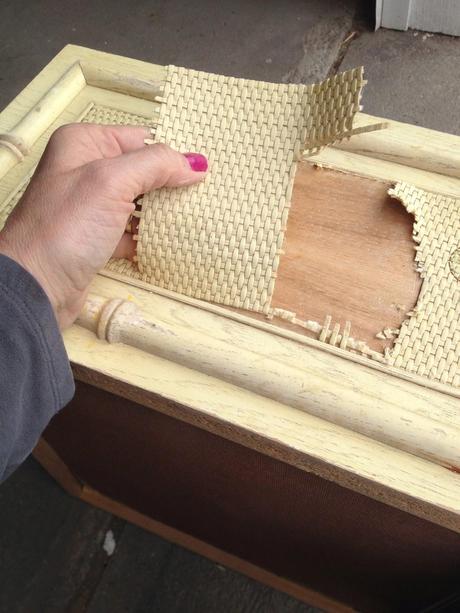 I then sanded the wood underneath and wood puttied along the edges to hide any deep cut marks I made.
I then sanded the wood underneath and wood puttied along the edges to hide any deep cut marks I made. 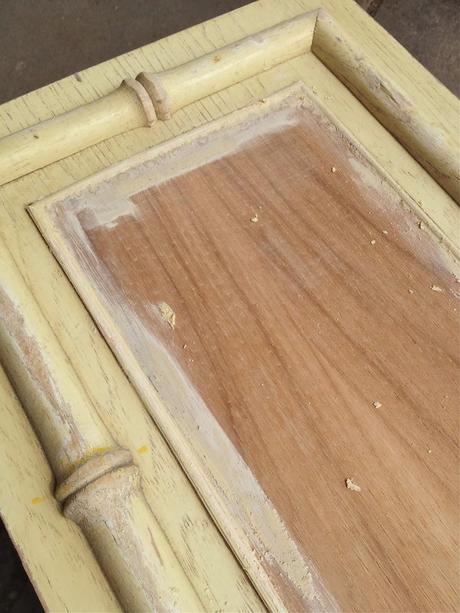 I also used wood putty to patch the chipped edges, gouges, open seams and nail holes.
I also used wood putty to patch the chipped edges, gouges, open seams and nail holes.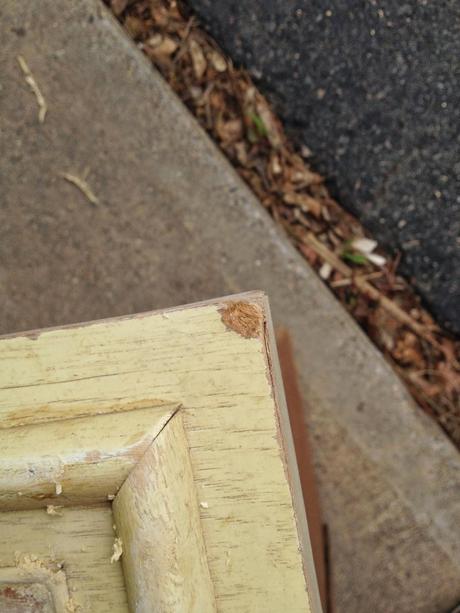 Once the putty dried I sanded it smooth with a fine sandpaper and wiped away all the dust with a tack cloth.
Once the putty dried I sanded it smooth with a fine sandpaper and wiped away all the dust with a tack cloth.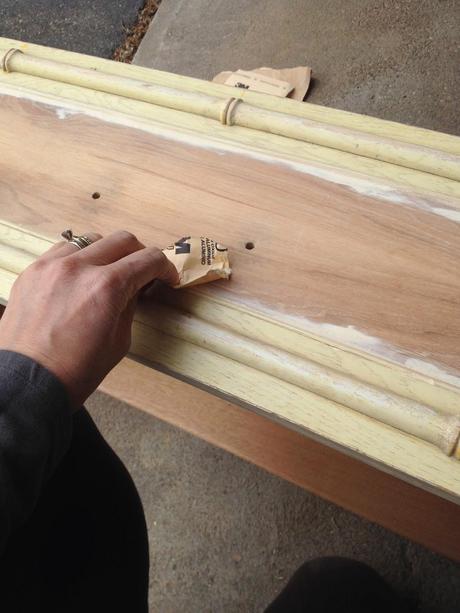 Now for the fun part... paint.
Now for the fun part... paint. I am loving this Stix primer.
It adheres to almost anything- great for laminate surfaces. You really need to wear gloves when using it or else it will be on you for weeks!
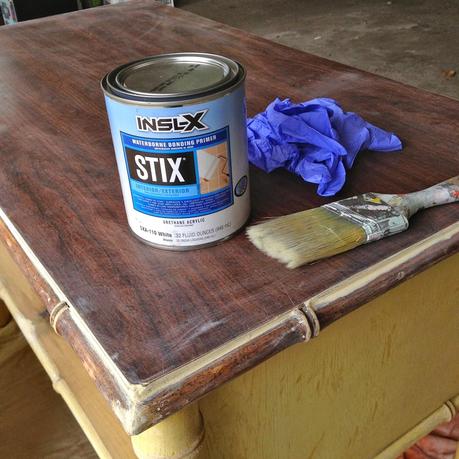
After two coats I gave the entire piece a fine sanding and wiped it down.
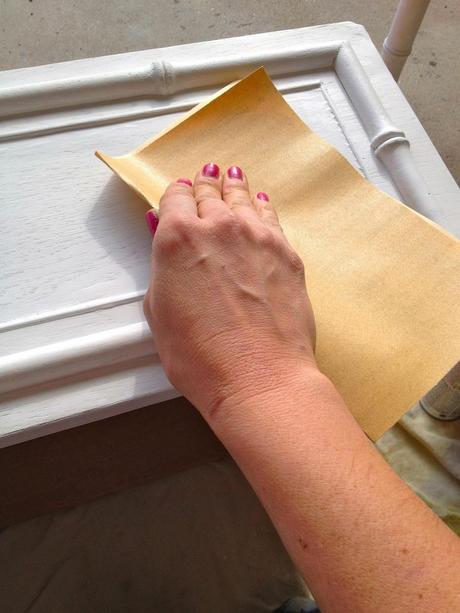 At this point you are ready for your finish coat of paint. I chose to go with a white Krylon spray paint here. The bamboo style details on this piece tend to collect drip and brush marks, so the spray creates a more even finish.
At this point you are ready for your finish coat of paint. I chose to go with a white Krylon spray paint here. The bamboo style details on this piece tend to collect drip and brush marks, so the spray creates a more even finish.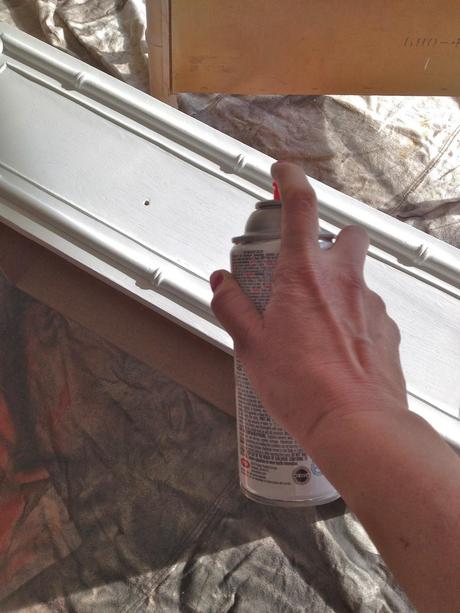 As my paint dried I tackled cleaning the hardware. In most cases when you revamp old furniture you usually swap out the old dated hardware for something newer. In this case I adored the bamboo pulls, so I gave them a quick shine with a Brill-o pad. I normally use brass cleaner or extra fine steel wool, but I was out of both. Brill-o was a little trick I learned online.
As my paint dried I tackled cleaning the hardware. In most cases when you revamp old furniture you usually swap out the old dated hardware for something newer. In this case I adored the bamboo pulls, so I gave them a quick shine with a Brill-o pad. I normally use brass cleaner or extra fine steel wool, but I was out of both. Brill-o was a little trick I learned online.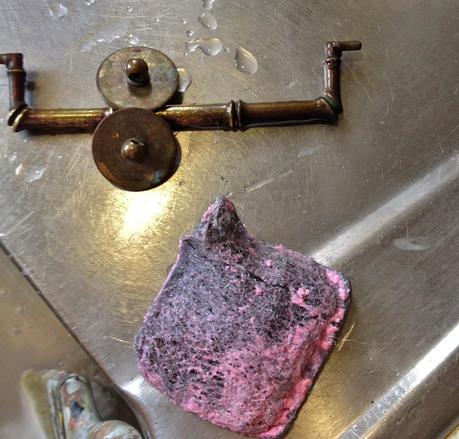
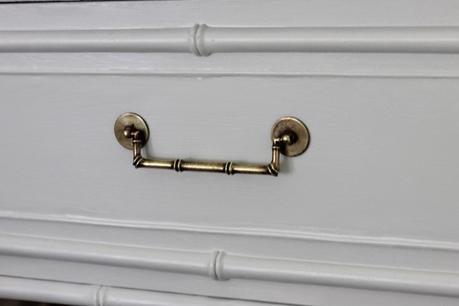
For the finishing touch I lined the draw with some leftover wrapping paper.
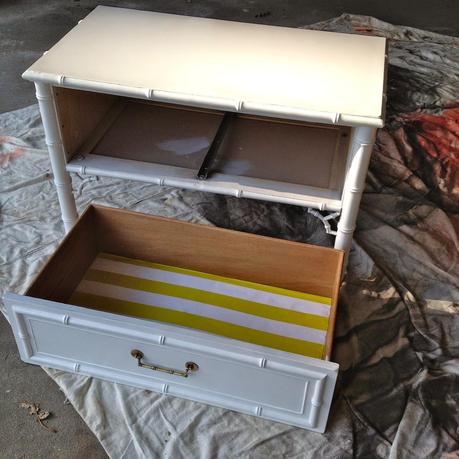 Once it was dry it went into my living room as my new end table!
Once it was dry it went into my living room as my new end table!
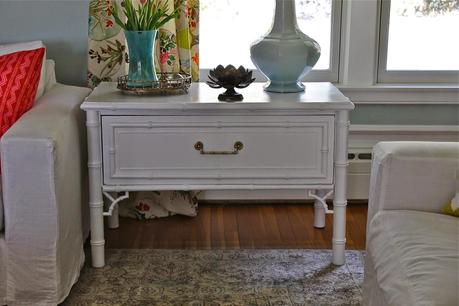 I'm so happy with my little curbside makeover...
I'm so happy with my little curbside makeover...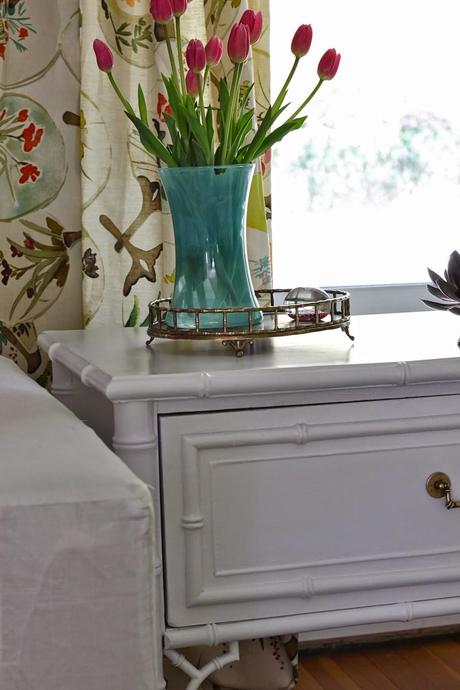
Now for the tough part. How you decide what's a keeper when looking at second hand furniture and not become a hoarder in the process? I am completely guilty for having way too many "future projects" littering my basement, and have gotten better at recognizing what I want vs. what I actually will use. Here are a couple of tips when deciding on that next "great find".
Have a budget & ask the right questions.
Lets start with your wallet. This usually helps to make the decision much faster. We need to estimate how much work will be involved. Even if it's free there is most likely going to be some repairs and materials needed to make it your own. You might even have a lot of the materials on hand. I usually ask myself "What's the most I'd pay if this were in a store?" Quite often I realize that I wouldn't buy it if it was, it's just the free or $5 price tag that is intriguing- so I walk away.
Now ask yourself a) do you have a place for it and b) do you have the time to do the work. If you answered no, it very well might go into the "project abyss" (mine is in my basement) to be forgotten and add to clutter. And a good final question is "Do I love it?" If you answer yes, well than take it home.
Old vs. New/ Wood vs. Particle Board
Is it hardwood or a big box knock off made of particle board? Real wood will be easier to makeover or fix, a damaged laminate or pressed board will be tough. Also, older vintage pieces are generally of better quality. I prefer older dressers and tables to the newer inexpensive pieces manufactured today for this reason. Joints are usually dovetailed, not nailed or stapled and the wood is usually a hardwood that will hold up much longer than softer pine or pressed board.
Don't be afraid of veneer. If it's in good shape a little elbow grease is all you need to bring it back to life. I found these mid-century dressers for a song and shined them up by rubbing on a little Restore-A-Finish with some fine steel wool, and then wiping the excess off with a clean cloth:

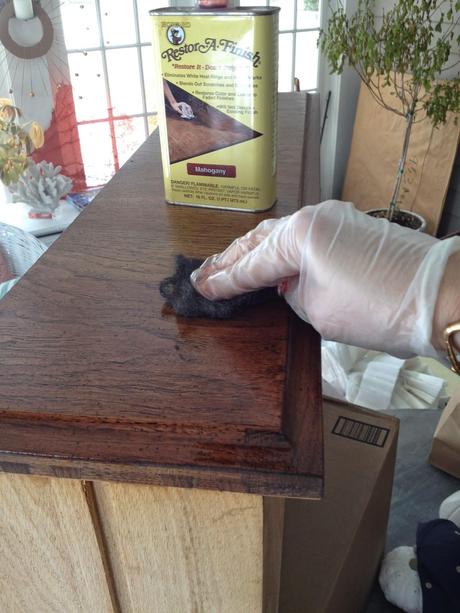
Good as new!
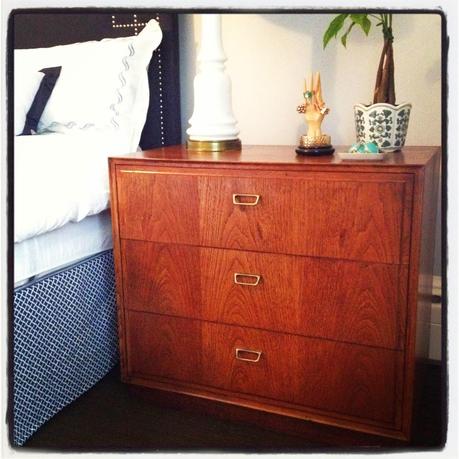
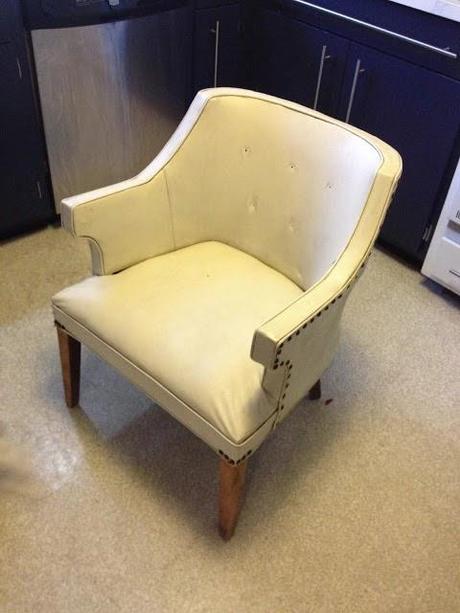
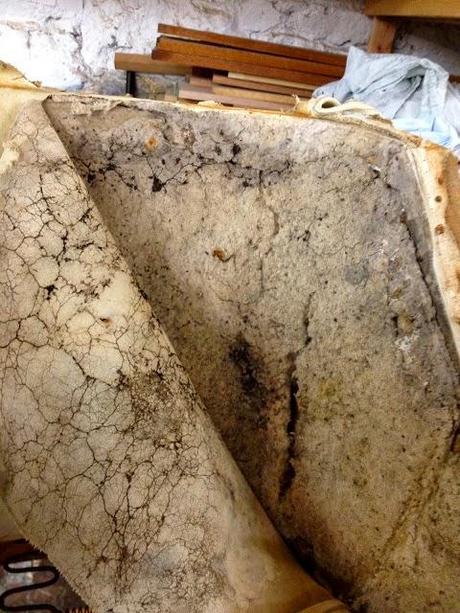
The worse part is that I brought it to an upholstery class, and when I opened it my teacher made me keep it to prove a point anything could be save. It turned out fine in the end, but I definitely shed some tears in that class!
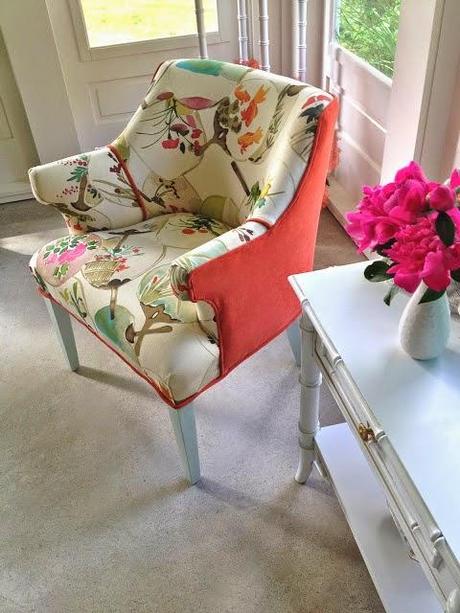

and lastly... be realistic
Know your comfort and skill level. The more you are able to do yourself, the bigger the savings. Are you OK with a little sanding and painting but intimidated by upholstering? I use the "University of Google & YouTube" to feel out tutorials before jumping in head first. It's so empowering to gain a new skill, and I can't tell you how much I've learned. I really should have a degree from them by know!

